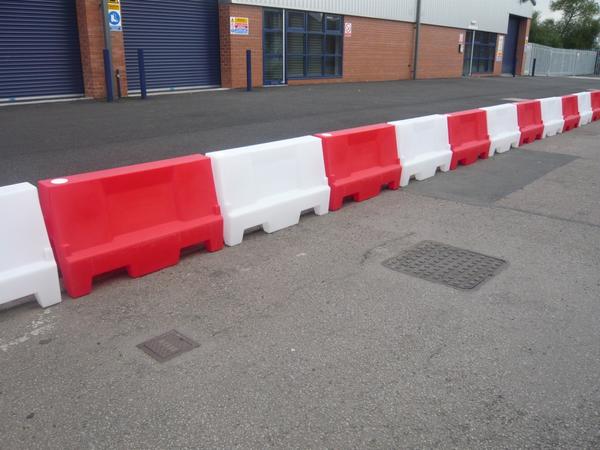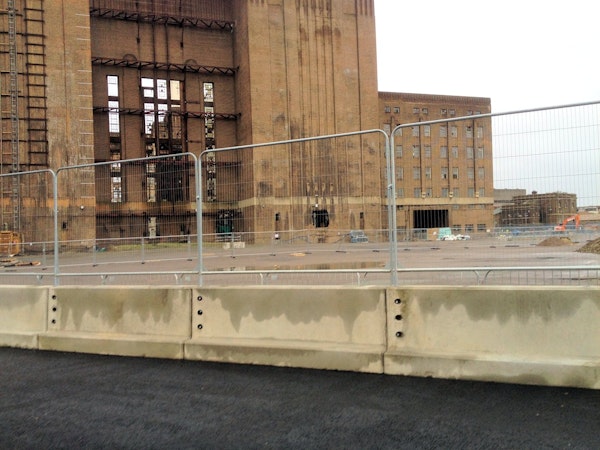There is a huge range of barriers to choose from. Whatever the challenge or purpose the industry has a range of solutions to offer. Our MASS crash tested, water-filled and concrete barriers can all suit multiple purposes and are reusable. This simple guide explains what the different barriers are, as well as their advantages and disadvantages.
MASS Crash Tested Barriers
Advantages
Probably one of the most renowned and used barriers on highways across Europe is the MASS Barrier. The system’s stability, easy deployment and cost-effectiveness, offer the following benefits:
- Ideal on low-speed areas (up to 30 mph) – their roll-on, roll-off protection design deflects errant vehicles, as the stability of the barrier is enhanced during impact.
- Non-permanent fixing – ideal for short term use as there is no drilling or coring involved, which also allows for speedy deployment.
- Available in a range of colours.
- Linkable bases which incorporate a wide range of top sections/panels.
- Versatility across a range of sites and situations with the addition of anti-debris, anti-gawk and anti-climb fencing panels.
- Designed to allow bends up to 90o to be accommodated.
- Suitable in a range of locations, including weather-vulnerable areas as the design of MASS crash tested barriers offer a significant level of wind resistance.
- Compliance with UK and EU standards.
- Relatively lightweight to allow easy stacking, transportation, installation and repositioning.
Disadvantages
- Whilst the MASS Barriers are often the go-to barrier, they do not offer the optimum protection for high-speed areas. In this regard, concrete barriers offer an alternative for protection for site and highway workers.
- MASS barriers may not be the ideal choice where more permanent traffic calming deterrents are required, such as anti-ram raid barriers.
Water Filled Barriers
Water-filled barriers are made from a high durability plastic and feature a hollow core which is filled with water. These barriers are particularly suitable for general use on roadways as traffic control or barriers to work sites or for delineating pedestrian restrictions and flow.
Advantages
The advantages of water-filled barriers are as follows:
- An extremely cost-effective option for traffic control and pedestrian restrictions
- Durable, ‘long life’ design
- Portable, light-weight (when empty) construction means that they’re easier and cheaper to transport and install (than heavier alternatives).
- Customisable and available in a range of sizes and high-visibility colours.
- Effective temporary solution which can be reused.
- Integral interlocking design, to achieve continuous barrier runs without the worry of pins or cables which could be tampered with.
- Environmentally friendly polyethylene, which is 100% recyclable.
- Can be enhanced in strength with steel framework for additional crash resistance.
Disadvantages
- There are some restrictions as to when and how some water-filled barriers can be used – for example where heavy plant or agricultural vehicles are frequently in use on site.
Concrete Barriers
Concrete barriers are constructed from reinforced concrete which means that they’re them particularly suitable for high-traffic areas or traffic-vulnerable sites. They also offer enhanced safety and risk reduction.
Advantages
We have a range of concrete blocks and barriers available and the advantages of these are as follows:
- Available in a surprising array of designs and sizes. There are also innovative substantial ‘lego block’ designs and universal design versions which allow for use on either side of traffic streams.
- Available in a range of sizes from 1.5m to 4m (ideal for blocking vehicle access).
- Custom made options available (with posts for example).
- Extremely heavy and permanent, they are ideal for protection against unwanted access and anti-social behaviour such as illegal gatherings and fly-tipping.
- Designs which incorporate fence for additional security – this can include bespoke fencing and interlocking systems to create continuous runs of robust barrier protection, ideal for site safety and security.
- Suitability for use on highways
- Suitability for securing buildings, particularly those in disrepair, as concrete barriers can also act as a retaining wall when in situ.
Disadvantages
Despite all the above advantages that concrete barriers offer, the barriers to have some disadvantages over their lighter alternatives:
- Low flexible or economy for short-term or ad hoc deployment.
- Requires a significant, initial outlay when purchased (although hiring, or ‘hire to buy’ offers a great value solution to this)
Which barrier is best?
Each of the above barrier types fit a range of purposes. One of these types is likely to suit any unique situation, location and budget. Start by identifying the safety requirements of the site, and choose the right barrier and purchase/hire option that suits the size and scope of the project.
You can also call one of our SafeSite Facilities experts, who will offer advice on the right barrier and cost effective option for you. We also offer a site assessment, to help you ensure compliance with regulations and standards. We also offer a range of additional services and products, such as gates, fencing, cctv and site clearance. So, consult us as early as possible to ensure that everything is covered before you start works.

